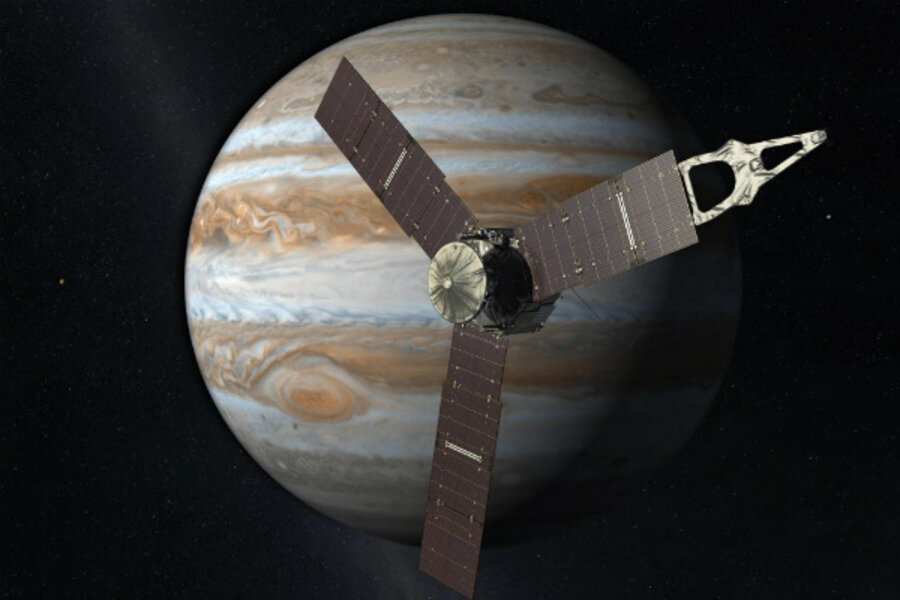NASA's Juno probe unexpectedly shuts down briefly en route to Jupiter
Loading...
NASA's Juno spacecraft buzzed Earth on Wednesday to enter the final leg of its 1.74-billion-mile trip to Jupiter – but not without giving mission managers an adrenaline rush as it sped on its way.
The craft, launched in August 2011, is slated to arrive at Jupiter in early July 2016. It flitted past Earth some 347 miles above the planet's surface Wednesday, taking advantage of Earth's gravity to put it on the right trajectory and give it the final burst of energy it needed to complete the five-year trip.
But 10 minutes after its close encounter with Earth, Juno unexpectedly shut down all nonessential systems. The condition, known as safe mode, occurred when Earth eclipsed the sun from Juno's perspective for about 20 minutes. This deprived the spacecraft of power from its solar panels. As designed, the craft quickly switched to battery power. But Juno also entered safe mode.
At this point, it's unclear what impact this has had on plans to use the Earth flyby to adjust the science instruments on the craft – a brief throat-clearing for the research tools that underpin this $1.1 billion mission. Some 29 sensors channel data into nine instruments.
During the flyby, the craft was to have snapped images of Earth and – atmospheric conditions willing – was to have received a repeated "Hi" in Morse code from amateur-radio operators around the world.
Safe mode still allows the craft to communicate with the ground and provide data on the status of its systems. So far, the craft looks healthy, according to Guy Webster, a spokesman for NASA's Jet Propulsion Laboratory in Pasadena, Calif. The JPL is overseeing mission operations.
Mission controllers are still downloading engineering data as well as the images Juno took of Earth during the flyby. Once the data are in hand, engineers will pore over it for clues to Juno's glitch.
Once Juno arrives at Jupiter it will take up an orbit that carries it over the planet's poles. Its suite of nine instruments are designed to give scientists with the $1.1 billion mission deeper insights into the structure of the planet's interior as well as into its atmosphere and the influence the giant planet's magnetic field wields on its atmosphere and wider space environment.








